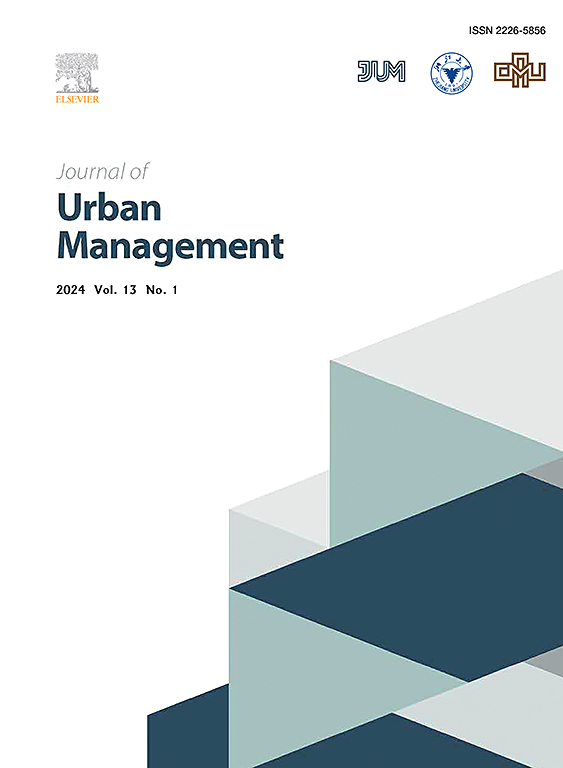城市环境中的教育不平等:学校分布和两班制挑战的空间分析 - 案例研究
IF 5
2区 社会学
Q1 URBAN STUDIES
引用次数: 0
摘要
确保教育公平对可持续发展至关重要,但这仍是一项全球性挑战。以往的研究对发达国家教育资源的空间公平性进行了广泛探讨,但对埃尔比勒等发展中地区的城市却缺乏足够的研究。此外,关于两班制学校对教育公平的影响的研究也非常少。本研究采用统计技术(位置商数和皮尔逊相关性)分析小学与人口数量之间的空间集中度和关系。此外,还利用地理信息系统(GIS)来研究影响教育公平的因素,重点是官立小学的空间分布及其与人口密度和房价的关系。这些技术包括平均中心、中心特征、标准距离、内核密度、平均最近邻近地区、缓冲区和 Thiessen 多边形,用于分析学校的地理分布、密度、模式、可达性、邻近性和学校位置评估。此外,本研究还通过考察教学时间来分析不同学校系统对公平的影响。结果显示,学校分布不均,主要集中在老城区,郊区较少,学校数量与房价呈负相关。值得注意的是,由于人数不足,埃尔比勒约 88% 的小学实行两班制,这使得每年的教学时间减少到 576 小时,大大低于其他学校系统。通过提出未来学校的公平优先模式并强调教育资源的有效分配,本研究为全球有关教育差距的讨论做出了贡献,并为城市环境中的公平资源分配提出了策略建议。本文章由计算机程序翻译,如有差异,请以英文原文为准。
Educational inequality in urban settings: A spatial analysis of school distribution and double-shift system challenges – A case study
Ensuring equity in education is crucial for sustainable development, yet it remains a global challenge. Previous research has extensively explored the spatial equity of educational resources in developed countries; however, there's a lack of adequate studies focused on cities within developing regions, like Erbil. Also, the impact of the double-shift school system on educational equity remains significantly unexplored. This study employs statistical techniques (Location Quotient and Pearson's correlation) to analyze the spatial concentration and the relationship between primary schools and population numbers. Additionally, GIS is utilized to examine factors affecting educational equity, focusing on the spatial distribution of government primary schools and their relation to population density and housing prices. These techniques include mean center, central feature, standard distance, kernel density, average nearest neighborhood, buffer zones, and Thiessen polygons to analyze schools' geographical distribution, density, patterns, accessibility, proximity, and school location assessment. Furthermore, this study analyzes the effects of different school systems on equity by examining instructional time. The results showed an uneven distribution of schools, concentrated in older areas with a scarcity on the city's outskirts, and a negative correlation between school numbers and housing prices. Notably, about 88% of Erbil's primary schools operate double shifts due to insufficient numbers, which reduces annual instruction time to 576 hours, significantly lower than in other school systems. By proposing an equity priority model for future schools and emphasizing the efficient allocation of educational resources, this study contributes to global discussions on educational disparities and suggests strategies for equitable resource distribution in urban settings.
求助全文
通过发布文献求助,成功后即可免费获取论文全文。
去求助
来源期刊

Journal of Urban Management
URBAN STUDIES-
CiteScore
9.50
自引率
4.90%
发文量
45
审稿时长
65 days
期刊介绍:
Journal of Urban Management (JUM) is the Official Journal of Zhejiang University and the Chinese Association of Urban Management, an international, peer-reviewed open access journal covering planning, administering, regulating, and governing urban complexity.
JUM has its two-fold aims set to integrate the studies across fields in urban planning and management, as well as to provide a more holistic perspective on problem solving.
1) Explore innovative management skills for taming thorny problems that arise with global urbanization
2) Provide a platform to deal with urban affairs whose solutions must be looked at from an interdisciplinary perspective.
 求助内容:
求助内容: 应助结果提醒方式:
应助结果提醒方式:


